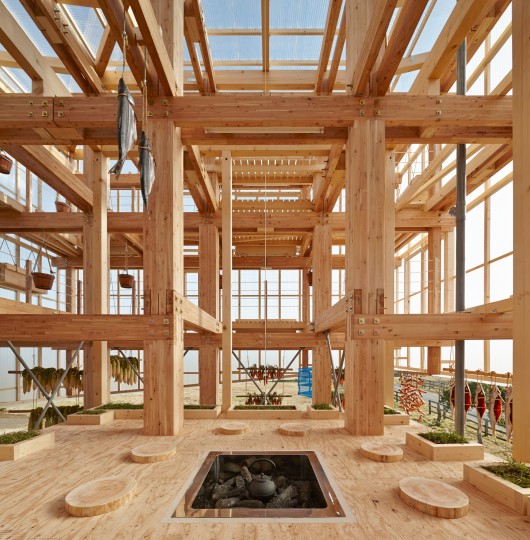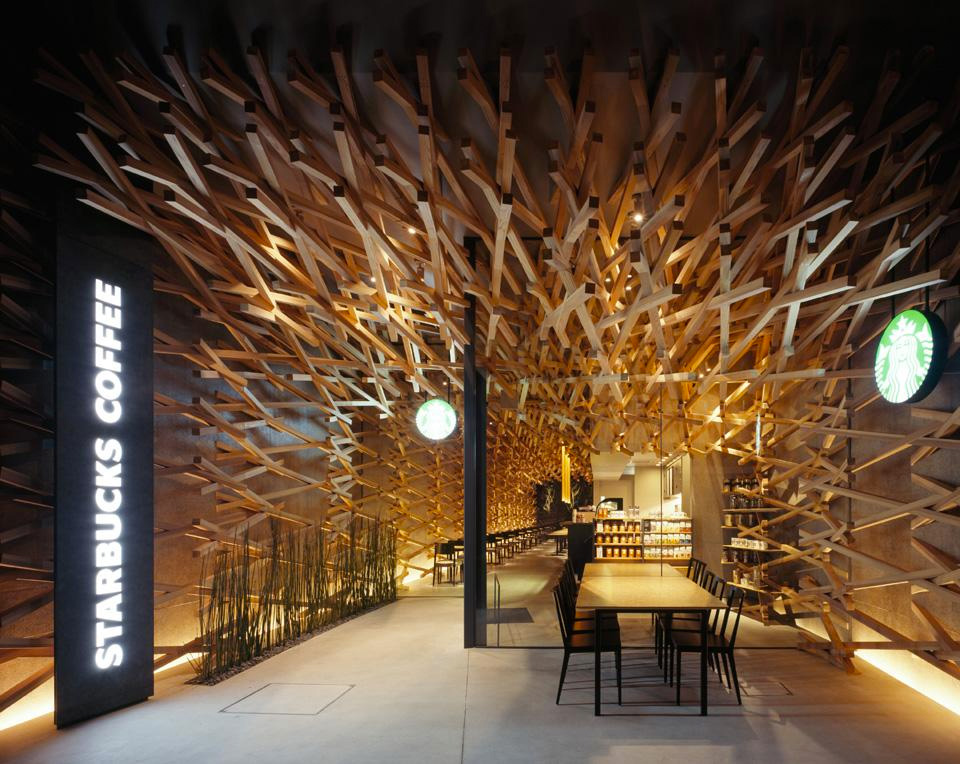Leave it to Japanese architect Kengo Kuma to continuously re-imagine what buildings primarily made of wood can look like, putting lumber to use in the most unexpected ways. We previously featured a few of Kuma’s strikingly unconventional designs which include criss-crossing slats, artistic arrangements of ceiling beams and interwoven poles, often incorporating Japan’s ancient joinery techniques.
This time, Kuma has helped create a light-filled community space along with a team of graduate students from the College of Environmental Design at UC Berkeley. ‘Nest We Grow’ brings quintessentially Californian ideas about architecture to Asia, with a focus on renewable materials.
The award-winning design focuses on a heavy timber construction technique using large sections of wood, which is a new concept in Japan, where columns are usually made up of smaller composite pieces. Says the design team, “It took considerable effort to identify a way to join materials, which was influenced by both local carpentry practices and the Japanese material market.”
“The wood frame structure mimics the vertical spatial experience of a Japanese larch forest from which food is hung to grow and dry. A tea platform in the middle of the nest creates a gathering space where the community can visually and physically enjoy food around a sunken fireplace. Local foods make up the elevation of the Nest as people see the food forest floating above the landform.”












